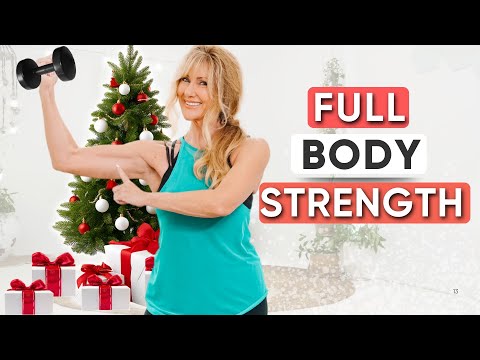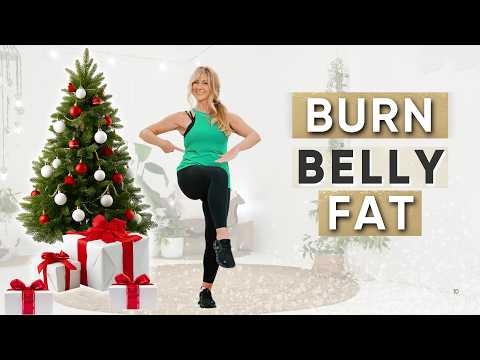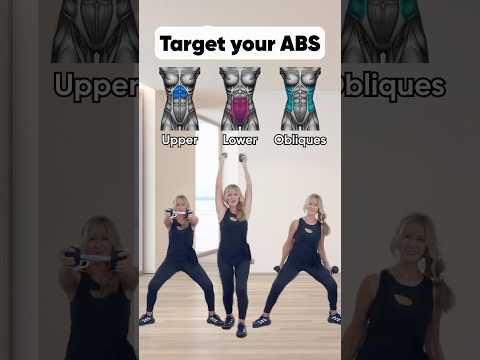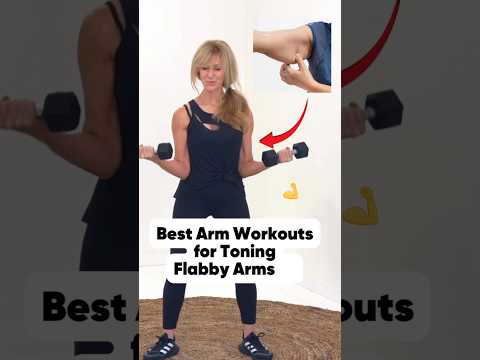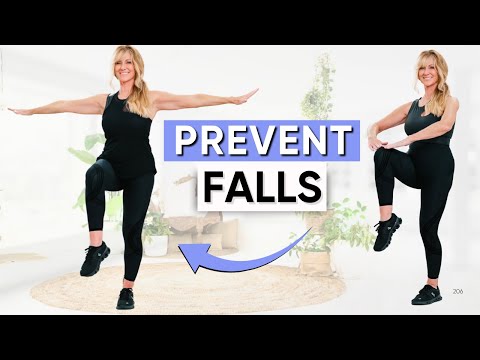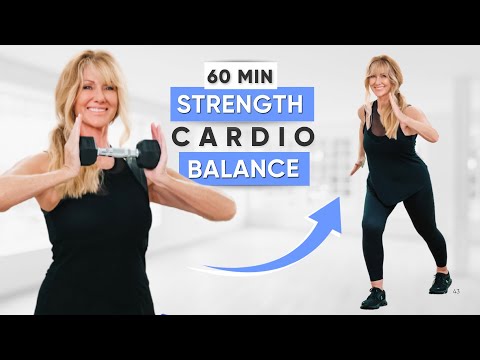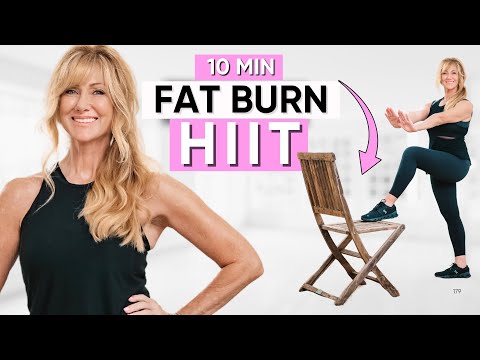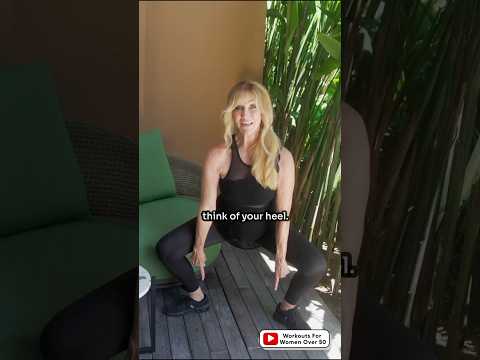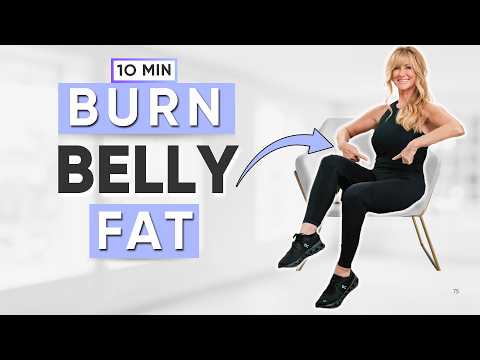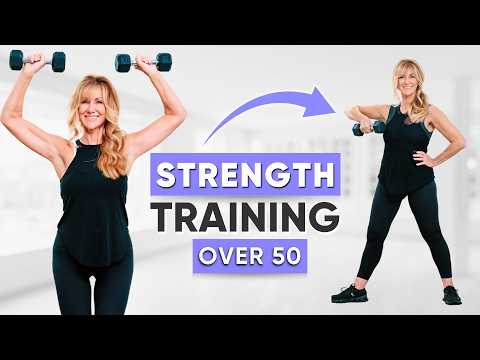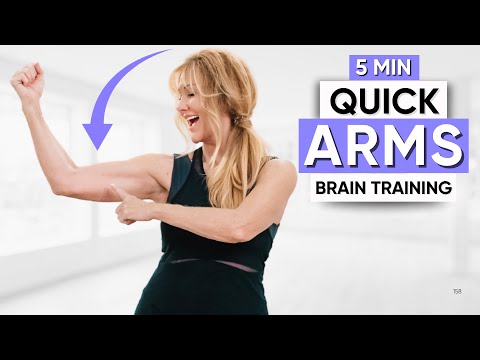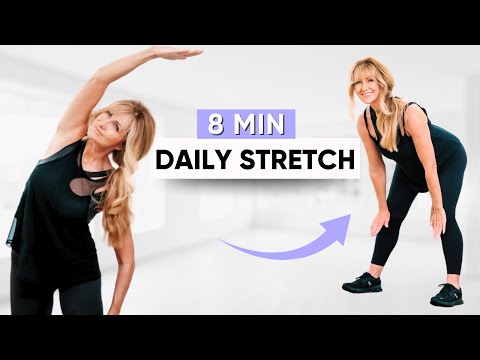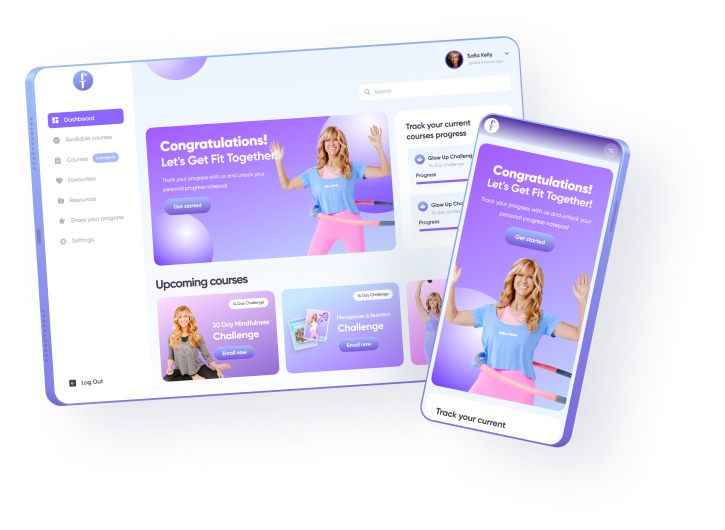Staying strong and active after 50 doesn’t mean you must spend hours at the gym. In fact, just 30 minutes a day can help you build strength, improve balance, and boost confidence, all from the comfort of your home.
This routine is specially designed for women over 50 (especially those in peri- or post-menopause) and focuses on core stability, joint-friendly movements, muscle tone, and mobility.
So, whether you’re starting fresh or getting back to fitness, this workout can be a powerful step toward feeling vibrant, steady and strong.
Why You Need This 30-Minute Full Body Strength Training Routine
As women age, particularly through menopause, the body changes in meaningful ways. Muscle mass begins to decline (a process called sarcopenia), bone density decreases, metabolism slows, and balance can wobble.
Well, that decline isn’t inevitable, but you can fight back. Research shows that resistance training and strength-based workouts are some of the most effective tools for women over 50.
For example, one study concluded that resistance training “can counteract the age- and menopause-related loss of muscle mass and strength in middle-aged women.” Another review noted that strength work improves bone mineral density (BMD) in postmenopausal women.
Putting in just 2-3 sessions per week of focused exercise can improve muscle, bones, balance, mood, and metabolism. This is about reclaiming vitality and independence for your body in this season of life.
Your 30-Minute Full Body Strength Training Routine: Equipment & Setup
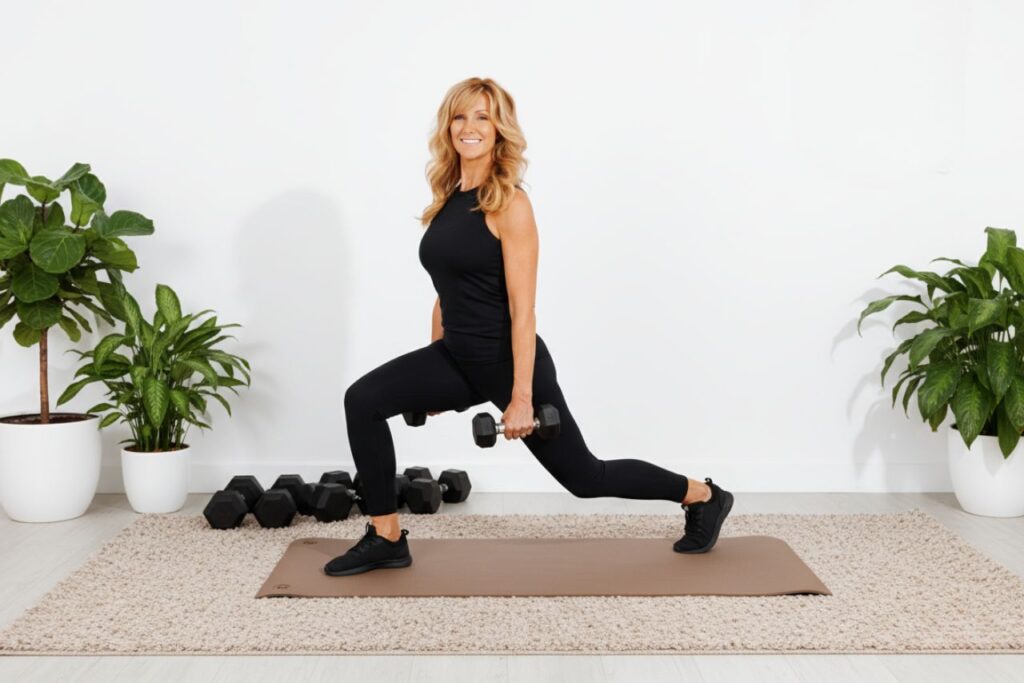
What you need:
- A pair of light to medium dumbbells (or household equivalents: water bottles, cans, etc.)
- A bit of space to move freely (standing and floor space)
- A mat or soft surface for floor/ground work
Structure:
- Warm-up: ~5 minutes
- 7 targeted strength/movement exercises (~45 seconds each)
- 3 rounds of the circuit (with short rest sets)
- Cool-down and stretch: ~5 minutes
You’ll target major muscle groups, improve joint stability, enhance mobility, and protect your body as you move and lift. It’s efficient, effective and doable.
Warm-Up Routine
Before lifting any weights, prepare your body with a gentle and joint-friendly warm-up. This increases circulation, improves mobility, and reduces injury risk, all big pluses for women over 50.
- Shoulder rolls (forward and back)
- Light marching in place (lifting knees gently, swinging arms)
- Arm swings/openers to loosen chest and upper back
- Hip circles, ankle rolls, gentle side bends
Just a few minutes of these movements are like waking up your muscles and lubricating your joints. Consider this your “body whisperer” moment; you’re telling your body, “I’m here. Let’s move together.”
Step-By-Step Guide: Full Body Strength Training Workout Over 50
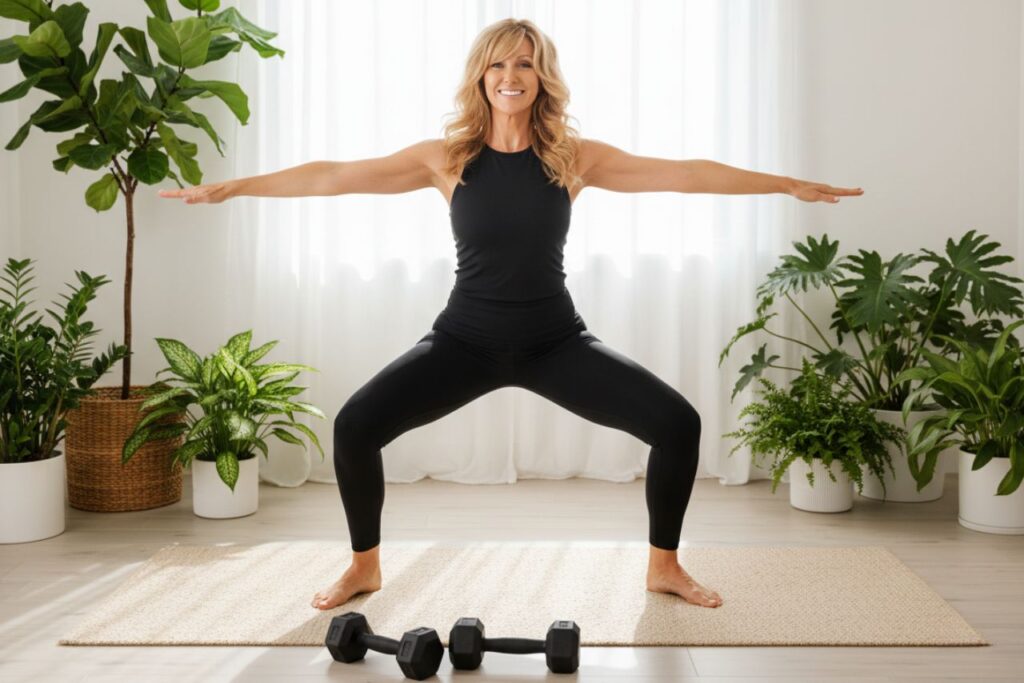
1. Overhead Press with March for Shoulders & Balance
Stand upright holding a dumbbell (or equivalent) in each hand. Engage your core, keep your posture tall, and press one dumbbell overhead as you march in place (lift one foot then the other). Alternate or keep steady rhythm for ~45 seconds.
Why it works:
This exercise targets shoulders, core stability and leg coordination, all at once. For women over 50, balance becomes a key factor in preventing falls, and combining overhead pressing with marching challenges coordination and stability.
Tip: Choose a weight you can handle comfortably without bending your back or losing form. Quality counts more than quantity.
Arms Hammer Curls for Function
With dumbbells in each hand and palms facing each other (“hammer grip”), keep elbows close to your sides. Curl the weights up toward your shoulders, then slowly lower back down. Repeat for 45 seconds.
Why it works:
Your arms do more than look good; they help you lift groceries, carry bags, and pick up grandkids. Hammer curls build functional arm strength and are gentle on joints because the neutral grip (palms facing) reduces strain.
Tip: Move slowly and with control. Focus on muscle working rather than rushing through reps.
3. Dumbbell Lunges for Stability & Leg Power
Stand tall holding dumbbells by your sides. Step one foot back (or forward if comfortable) into a lunge, lowering until both knees are around 90 degrees (or as comfortable), then push through the heel of your front foot to return upright. Alternate legs for 45 seconds.
Why it works:
Lunges target glutes, quads and hamstrings to improve balance. For women over 50, strengthening the muscles around the knee and hip is vital for protecting joints and maintaining mobility and independence.
Tip: If your knees hurt, try lowering the depth of your lunge or holding onto a chair for support. Focus on posture and engaging your glutes rather than depth.
4. Beginner Deadlift
Hold one dumbbell (or two light ones) vertically in front of you. Hinge at your hips, keeping your chest lifted and back straight, lower the weight toward the floor (or just below knee height), then push through your heels to stand upright. Do this routine for 45 seconds.
Why it works:
Your posterior chain (hamstrings, glutes, and lower back) is the power engine for walking, lifting, and standing up. It becomes especially important after 50. Research shows strength training improves posture, muscle mass, back health and metabolic health.
Tip: Don’t rush the hinge. Pretend you’re closing a car door with your hips. Keep your gaze slightly forward, back neutral.
5. Modified Floor Press for Chest & Arm Strength Safely
Lie on your back with knees bent and feet flat on the floor. Hold dumbbells in each hand, elbows by your sides. Press weights up over your chest, then slowly lower them with control. Do this for 45 seconds.
Why it works:
This move builds strength in your chest, shoulders and triceps, areas that can weaken after 50. Being on the floor provides extra support for joints, making it a safe choice.
Tip: If shoulder pain is present, keep elbows slightly tucked, use light weights, and focus on smooth motion rather than heavy lifts.
6. Kneeling Row for Upper Back & Posture
Kneel on one knee (or both if comfortable) with a dumbbell in one hand. Row by pulling your elbow toward your rib cage while keeping your core and hips stable. Alternate arms or do each side for 45 seconds.
Why it works:
Many women over 50 experience rounded shoulders, back stiffness and poor posture after years of leaning over desks or phones. Rows strengthen the upper back, improve posture, and support shoulder health. Full body sttrength training has been shown to improve quality of life and body image in older women.
Tip: Keep your spine straight and core engaged, and avoid twisting your hips; focus on the row motion through the arm and shoulder blade.
7. Seated Russian Twist for Core Stability & Safe Rotation
Sit with knees bent and feet flat (or feet raised if comfortable). Lean back slightly with a tall chest. Without rounding your back, gently twist your torso side to side, tapping the floor with your hands or weight. Move steadily for ~45 seconds. If you have osteoporosis or are new, skip the weight until you’re more confident.
Why it works:
Core strength helps you reach, twist, lift and carry safely. Strong obliques protect your spine, support rotation, and improve functional movement in daily life.
Tip: Move slowly, with control. If your back rounds, reduce the lean angle.
Putting It All Together: Rounds 2 & 3 of Full Body Strength Training
Once you complete the seven exercises for Round 1, rest 30–60 seconds, then repeat for Round 2 and Round 3. That’s three full rounds.
This repetition gives your muscles time under stress, which increases their strength, endurance, and metabolic rate. All of this is still easy to handle and beginner-friendly.
Medical and exercise science evidence shows strength training even 2-3 times per week improves muscle mass, metabolism, and bone health in women in this age bracket.
Cool Down & Stretch: Flexibility and Recovery
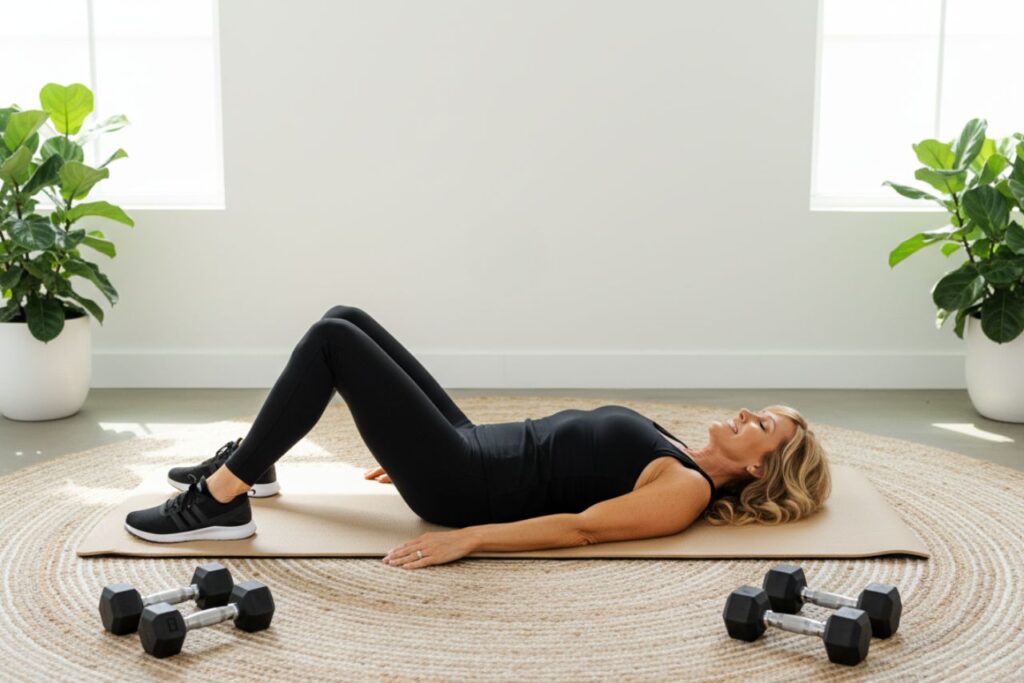
Finish with 5 minutes of gentle stretch and mobility to ease tension, lengthen the muscles worked and increase circulation.
Stretching supports flexibility, reduces soreness, improves recovery and keeps you moving smoothly. Research shows regular strength and mobility work improves sleep, mood and quality of life for older women.
Final Tips for Success
- Aim to perform this routine two to three times per week. Consistency matters more than daily perfection.
- As your strength improves, gradually increase your dumbbell weight (while maintaining good form).
- After your workout, fuel your muscles. Aim for at least ~30 grams of protein (research shows higher protein supports muscle maintenance post-50).
- Focus on joint-friendly movement and quality form. This routine is designed specifically to protect your knees, hips, shoulders and spine.
- Remember: this is about vitality. You’re building strength for freedom, independence and joy, not chasing a number on a scale.
Why This Works — In Science and Heart
- Strength training slows and, in many cases, reverses muscle-fibre changes tied to aging.
- For bone health: resistance training improves lumbar spine and femoral neck bone mineral density in postmenopausal women.
- Starting later in life still matters, it’s never too late to build strength and resilience.
- Improved strength and mobility translate into better balance, lower fall risk and higher quality of life.
Final Thoughts
Building strength after 50 is one of the best gifts you can give your future self. You’ll feel stronger in your body again, more capable, and more confident. You’ll also protect your joints, support your bone health, and keep your independence.
You are fabulous, you are powerful and your body absolutely deserves to feel amazing.
Secure your VitaliT App Free Trial today and be among the first to experience a whole new way to train for longevity, strength, and confidence.
When you join the waitlist, you’ll get access to a free trial of the VitaliT App, your all-in-one wellness companion created by Schellea Fowler to help women in midlife and beyond move smarter, eat better, and feel incredible every day.
As a thank-you for joining early, you’ll get access to new features, workouts, and programs designed to help you stay strong, calm, and connected at every stage of life.
👉 Join now and claim your free trial + bonuses
Frequently Asked Questions on Full Body Strength Training Over 50
Absolutely. Studies show that women in their 50s, 60s, and even 70s can significantly increase muscle mass and strength through consistent resistance training. In fact, research published in BMC Women’s Health found that just 2–3 sessions per week can counteract age-related muscle loss and boost mobility.
Start with light to medium dumbbells (2–5 kg or 4–10 lb) and focus on perfect form. As your strength improves, you can gradually increase the weight. If you’re brand-new to exercise or recovering from injury, household items like water bottles or canned goods are great substitutes until you feel comfortable progressing.
Yes, these exercises are joint-friendly and designed to strengthen the muscles around your knees, hips, shoulders, and spine. According to the Arthritis Foundation, controlled strength training reduces pain and stiffness by supporting joint function and stability. If you experience discomfort, shorten your range of motion, slow your pace, and avoid locking your joints.
Strength training is one of the best things you can do for bone health. A 2023 systematic review confirmed that resistance exercises improve bone mineral density in postmenopausal women, particularly in the spine and hips. If you have advanced osteoporosis, avoid twisting or high-impact movements, keep your spine neutral and movements slow and controlled.
Most women notice changes in energy, posture, and confidence within 2–3 weeks, and visible strength or muscle tone after 4–6 weeks of consistent training. Small, steady progress is key over time, you’ll feel stronger, stand taller, and move with more ease in your daily life.

